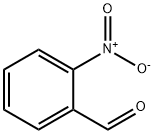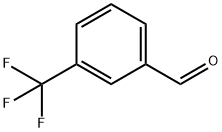3-Cyclohexene-1-carboxaldehyde
Synonym(s):1,2,3,6-Tetrahydrobenzaldehyde;4-Formyl-1-cyclohexene
- CAS NO.:100-50-5
- Empirical Formula: C7H10O
- Molecular Weight: 110.15
- MDL number: MFCD00001572
- EINECS: 202-858-3
- SAFETY DATA SHEET (SDS)
- Update Date: 2025-03-12 07:03:40

What is 3-Cyclohexene-1-carboxaldehyde?
Chemical properties
slightly yellowish-green liquid
The Uses of 3-Cyclohexene-1-carboxaldehyde
Cyclohex-3-ene-1-carbaldehyde can be used as coupled exposure to ingredients of cosmetic products.
What are the applications of Application
3-Cyclohexene-1-carboxaldehyde is an aldehyde
Synthesis Reference(s)
Journal of the American Chemical Society, 92, p. 3126, 1970 DOI: 10.1021/ja00713a034
The Journal of Organic Chemistry, 52, p. 5293, 1987 DOI: 10.1021/jo00232a049
General Description
A colorless liquid. Flash point 135°F. Less dense than water and slightly soluble in water. Hence floats on water. Irritates skin, eyes and mucous membranes. Used to make fabrics water resistant, and to make other chemicals.
Air & Water Reactions
Flammable. Slightly soluble in water.
Reactivity Profile
3-Cyclohexene-1-carboxaldehyde is an aldehyde. Aldehydes are frequently involved in self-condensation or polymerization reactions. These reactions are exothermic; they are often catalyzed by acid. Aldehydes are readily oxidized to give carboxylic acids. Flammable and/or toxic gases are generated by the combination of aldehydes with azo, diazo compounds, dithiocarbamates, nitrides, and strong reducing agents. Aldehydes can react with air to give first peroxo acids, and ultimately carboxylic acids. These autoxidation reactions are activated by light, catalyzed by salts of transition metals, and are autocatalytic (catalyzed by the products of the reaction). The addition of stabilizers (antioxidants) to shipments of aldehydes retards autoxidation.
Health Hazard
May cause toxic effects if inhaled or absorbed through skin. Inhalation or contact with material may irritate or burn skin and eyes. Fire will produce irritating, corrosive and/or toxic gases. Vapors may cause dizziness or suffocation. Runoff from fire control or dilution water may cause pollution.
Fire Hazard
HIGHLY FLAMMABLE: Will be easily ignited by heat, sparks or flames. Vapors may form explosive mixtures with air. Vapors may travel to source of ignition and flash back. Most vapors are heavier than air. They will spread along ground and collect in low or confined areas (sewers, basements, tanks). Vapor explosion hazard indoors, outdoors or in sewers. Runoff to sewer may create fire or explosion hazard. Containers may explode when heated. Many liquids are lighter than water.
Flammability and Explosibility
Flammable
Safety Profile
Moderately toxic by ingestion, inhalation, and sh contact. Corrosive. An eye, skin, and mucous membrane irritant. Flammable liquid. When heated to decomposition it emits acrid smoke and irritating fumes. See also ALDEHYDES.
Properties of 3-Cyclohexene-1-carboxaldehyde
| Melting point: | 1-3°C |
| Boiling point: | 163-164 °C(lit.) |
| Density | 0.94 g/mL at 25 °C(lit.) |
| vapor density | 3.8 (vs air) |
| vapor pressure | 2.52hPa at 25℃ |
| refractive index | n |
| Flash point: | 115 °F |
| storage temp. | 2-8°C |
| solubility | Slightly soluble in water |
| form | clear liquid |
| color | Colorless to Light yellow |
| Water Solubility | 11.5g/L at 20℃ |
| Sensitive | Air Sensitive |
| BRN | 774001 |
| Stability: | Stable. Incompatible with strong oxidizing agents, strong bases, strong reducing agents. |
| CAS DataBase Reference | 100-50-5(CAS DataBase Reference) |
| NIST Chemistry Reference | 3-Cyclohexene-1-carboxaldehyde(100-50-5) |
| EPA Substance Registry System | 3-Cyclohexene-1-carboxaldehyde (100-50-5) |
Safety information for 3-Cyclohexene-1-carboxaldehyde
| Signal word | Warning |
| Pictogram(s) |
 Flame Flammables GHS02  Exclamation Mark Irritant GHS07 |
| GHS Hazard Statements |
H226:Flammable liquids H312:Acute toxicity,dermal H315:Skin corrosion/irritation H319:Serious eye damage/eye irritation H335:Specific target organ toxicity, single exposure;Respiratory tract irritation |
| Precautionary Statement Codes |
P210:Keep away from heat/sparks/open flames/hot surfaces. — No smoking. P280:Wear protective gloves/protective clothing/eye protection/face protection. P305+P351+P338:IF IN EYES: Rinse cautiously with water for several minutes. Remove contact lenses, if present and easy to do. Continuerinsing. |
Computed Descriptors for 3-Cyclohexene-1-carboxaldehyde
New Products
3-Oxocyclobutane-1-carboxylicacid 4-(Ethylaminomethyl)pyridine Ethyl 3-pyridylacetate 5-Chloro-1-(4-piperidyl)-2-benzimidazolinone Pyridin-4-ylmethanol hydrobromide Trans-methyl 4-aminocyclohexane- carboxylate HCl 1-Indanone 4-Chloro Phenyl hydrazine hydrochloride Nintedanib Ethanesulfonate (S)-2-(3,5-diMethylphenyl)pyrrolidine Ethyl 2-(4-(chlorosulfonyl)-2-methylphenoxy)acetate (2R,3S,4S,5R)-3-(3,4-difluoro-2-methoxyphenyl)-4,5-dimethyl-5-(trifluoromethyl)tetrahydrofuran-2-carboxylic acid (R)-1-phenylethan-1-amine salt 1-Bromo-2-Methoxy-3-Nitrobenzene N N N'Trimethyl ethylenediamine N Ethylmethylamine Ethyl Methanesulfonate Variamine Blue B Diazonium salt Lead II Bromide N N' DimethylEthylenediamine L-Glycine methyl ester.HCl Calcium Alphaketoglutarate* Fmoc-L-Glu(OtBu)-OH.H2O H-Ser(t-Bu)-Ser(t-Bu)-Gly-OH Fmoc-Ser(tBu)-Ser(Ψ(Me,Me)pro-OHRelated products of tetrahydrofuran








You may like
-
 3-Cyclohexene-1-carboxaldehyde CAS 100-50-5View Details
3-Cyclohexene-1-carboxaldehyde CAS 100-50-5View Details
100-50-5 -
 3-Cyclohexene-1-carboxaldehyde CAS 100-50-5View Details
3-Cyclohexene-1-carboxaldehyde CAS 100-50-5View Details
100-50-5 -
 2-Fluoro-6-iodobenzoic acid 111771-08-5 98+View Details
2-Fluoro-6-iodobenzoic acid 111771-08-5 98+View Details
111771-08-5 -
![3-(4-bromo-3-methyl-2-oxo-2,3-dihydro-1H-benzo[d]imidazol-1-yl)piperidine-2,6-dione 98+](https://img.chemicalbook.in//Content/image/CP5.jpg) 3-(4-bromo-3-methyl-2-oxo-2,3-dihydro-1H-benzo[d]imidazol-1-yl)piperidine-2,6-dione 98+View Details
3-(4-bromo-3-methyl-2-oxo-2,3-dihydro-1H-benzo[d]imidazol-1-yl)piperidine-2,6-dione 98+View Details
2304754-51-4 -
 2,3-Difluoro-6-methoxybenzyl Chloride 1073435-67-2 98+View Details
2,3-Difluoro-6-methoxybenzyl Chloride 1073435-67-2 98+View Details
1073435-67-2 -
 1589503-95-6 98+View Details
1589503-95-6 98+View Details
1589503-95-6 -
 2-(6-(benzyloxy)-3,4-dihydronaphthalen-2-yl)-4,4,5,5-tetramethyl-1,3,2-dioxaborolane 98+View Details
2-(6-(benzyloxy)-3,4-dihydronaphthalen-2-yl)-4,4,5,5-tetramethyl-1,3,2-dioxaborolane 98+View Details
2477812-43-2 -
 KT-474 98+View Details
KT-474 98+View Details
2432994-31-3
